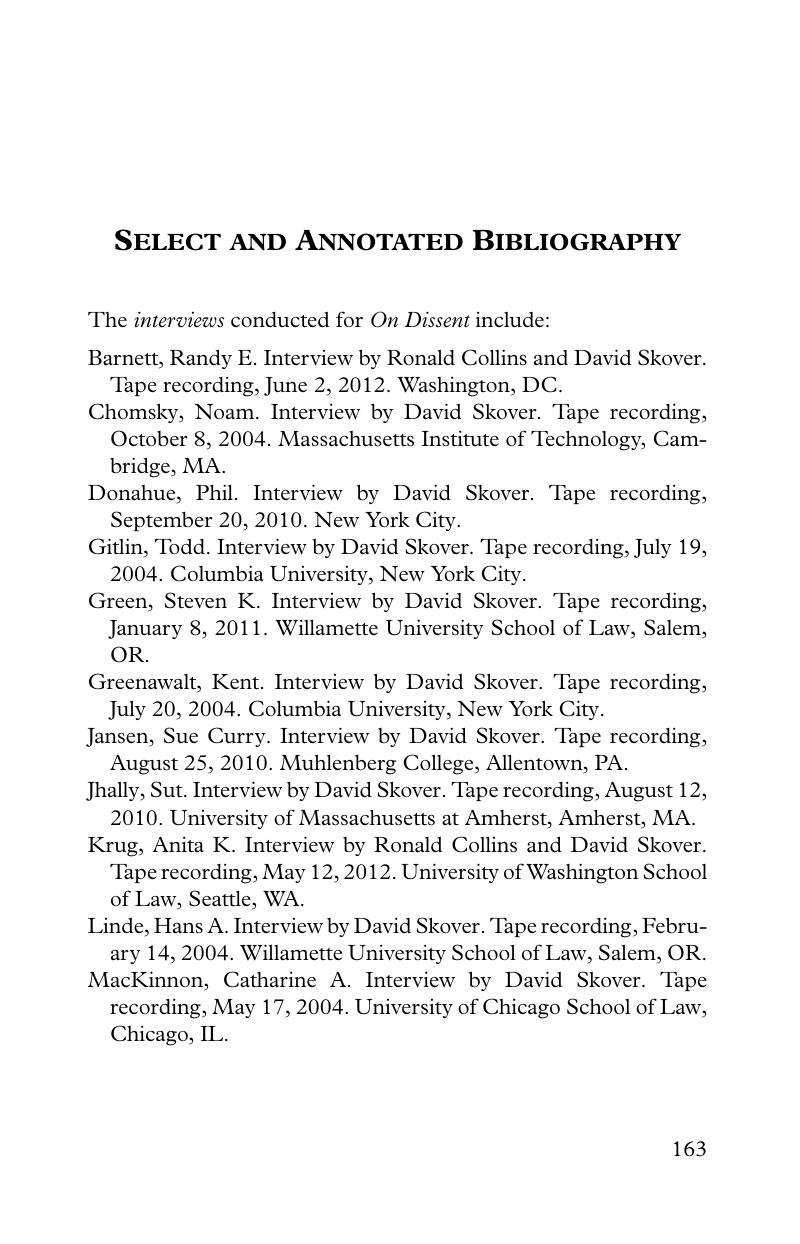Book contents
- Frontmatter
- Contents
- Informationis Personae
- Prologue
- Chapter I From Judicial Dissent to Peaceful Protest
- Chapter II From Civil to Uncivil Disobedience
- Chapter III The Vagaries of Violence
- Chapter IV Dissent, Inc.
- Chapter V Dissent and Law's Parameters
- Epilogue
- Notes
- Acknowledgments
- About the Authors
- About the Informationis Personae
- Select and Annotated Bibliography
- Index
- References
Select and Annotated Bibliography
Published online by Cambridge University Press: 05 May 2013
- Frontmatter
- Contents
- Informationis Personae
- Prologue
- Chapter I From Judicial Dissent to Peaceful Protest
- Chapter II From Civil to Uncivil Disobedience
- Chapter III The Vagaries of Violence
- Chapter IV Dissent, Inc.
- Chapter V Dissent and Law's Parameters
- Epilogue
- Notes
- Acknowledgments
- About the Authors
- About the Informationis Personae
- Select and Annotated Bibliography
- Index
- References
Summary

- Type
- Chapter
- Information
- On DissentIts Meaning in America, pp. 163 - 172Publisher: Cambridge University PressPrint publication year: 2013



